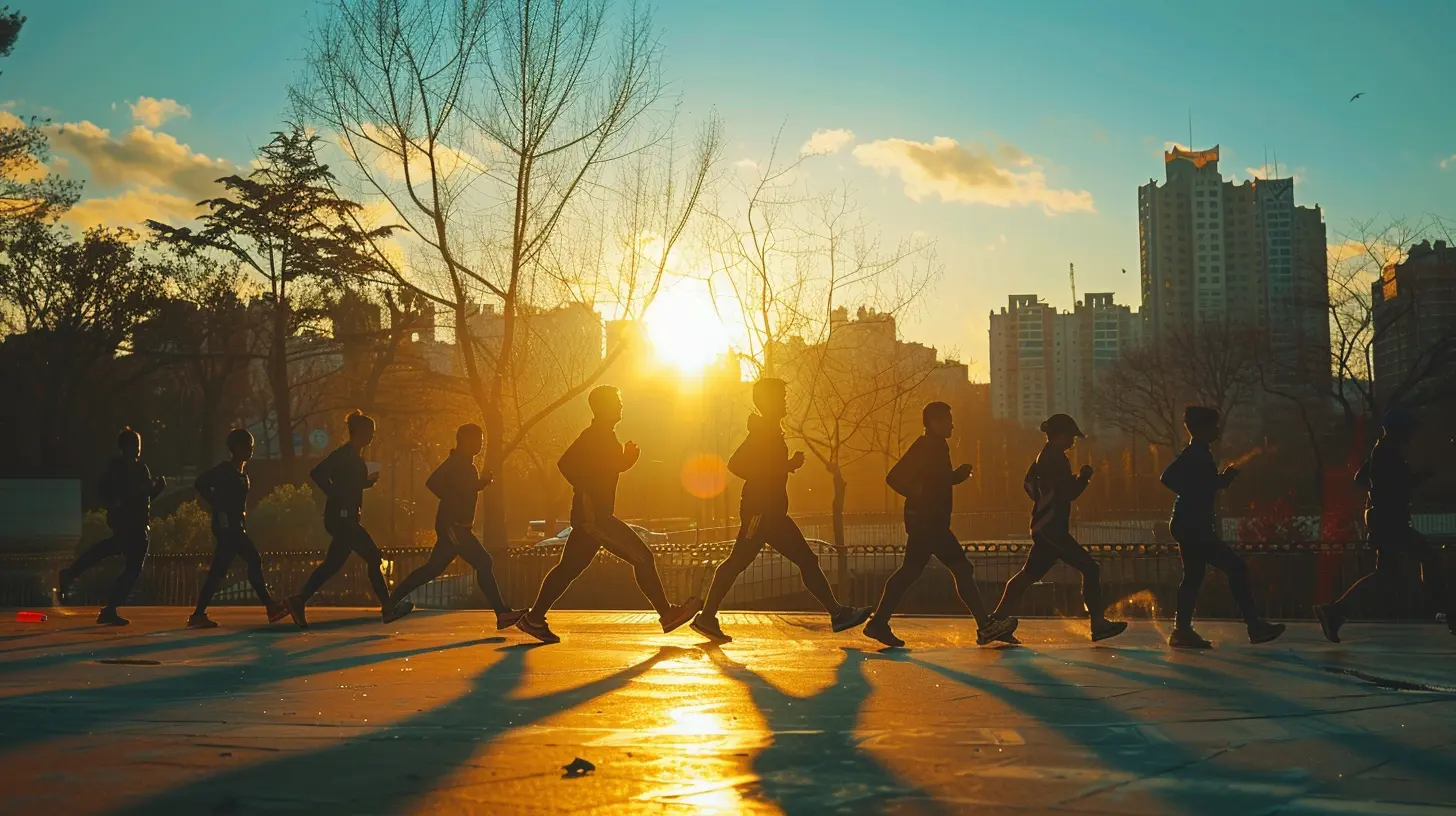Why Cross-Training is a Must for Every Runner
25 October 2025
Let’s get real here—running is awesome. There’s nothing like the wind in your face, the thud-thud of your feet on the pavement, or that glorious runner’s high that makes you feel like a gazelle crossed with Superman. But if you’re a runner and the only thing you do is run, we gotta have a little chat. Because friend, you’re missing out on the secret sauce that can boost your performance, protect your knees, and basically help you run like the wind… without breaking down like an old lawn mower. That secret sauce? Cross-training.
Yeah, I know. It sounds like something that bodybuilders do with giant tires and protein shakes in hand. But it’s not just for the gym bros. Cross-training is the secret weapon every runner needs but often ignores—kinda like flossing, but way more fun and slightly less guilt-ridden.
So, buckle up—or lace up—because we’re diving into why cross-training is a must for every runner, no matter if you’re prepping for a marathon or just trying to survive your neighborhood 5K.
What the Heck is Cross-Training, Anyway?
Before we dive into the why, let’s tackle the what. Cross-training is basically any workout that isn’t running but still improves your running. Think cycling, swimming, strength training, yoga, Pilates, rowing—heck, even dancing if you’ve got moves like Jagger.The idea is simple: give your running muscles a break, target other muscles, improve flexibility, and build endurance and strength in ways your typical jog around the block can’t.
It’s like giving your body a new language to speak, so when you go back to running, it’s smarter, stronger, and more resilient.
Reason #1: Avoid Becoming a Running Zombie
Ever see a runner who looks like they’re auditioning for a role in the next season of The Walking Dead? Yeah, that stiff, shuffling gait comes from overtraining the same muscles day in and day out with no variation. That’s called repetitive strain, and it’s the fast track to injury town.Cross-training helps you mix things up so your muscles, joints, and ligaments aren’t screaming bloody murder every time your foot hits the ground. You’ll keep your body guessing, which is a good thing—even if your hamstrings initially file a complaint.
TL;DR: Change it up, or turn into a running mummy.

Reason #2: Injury Prevention – Because Nobody Wants to Be Benched
Let’s play a quick game. What do shin splints, runner’s knee, and Achilles tendinitis have in common? That’s right—they’re all injuries that LOVE overzealous runners.Running puts a ton of stress on your body—especially your lower half. Cross-training acts like a support system. It strengthens the muscles that support your joints, improves balance, and corrects muscular imbalances that running alone can actually make worse.
For example: Strength training can make your glutes and core stronger, which means less pressure on your knees. Yoga can improve flexibility, helping you avoid the dreaded “snap, crackle, pop” noises during your run. And swimming gives your joints a break while still cranking your cardio.
Think of it like this: Cross-training is the bubble wrap for your joints.

Reason #3: Improved Performance – AKA Run Like You Stole Something
If you think cross-training is just a gentle side hustle for your body—think again. When you do it right, cross-training can make you faster, stronger, and more efficient.How? Because different workouts target different parts of your body and energy systems. For instance, cycling can crank up your leg strength and anaerobic threshold, while HIIT workouts boost your VO₂ max (translation: your body gets better at using oxygen). That means when you run, you’re not gasping for air like you’ve just seen your ex at the finish line.
Strength training, on the other hand, helps your muscles produce more power with each stride—so you can fly down the track like a caffeinated gazelle.
Bottom line: Cross-train like a boss, and you’ll run like one too.
Reason #4: Mental Toughness – Because Your Brain Needs a Workout, Too
You know those days when you’d rather eat a kale smoothie flavored with regret than go for a run? Yeah, we’ve all been there. That’s where cross-training comes in clutch.Adding variety to your routine keeps things fresh and exciting. It challenges your brain, helps you push past mental blocks, and keeps your motivation from hitting snooze.
Ever tried kickboxing? It forces you to focus, coordinate, and move like Bruce Lee in spandex. That mental engagement sharpens your mind, which is super handy when you’re 10 miles into a half marathon and questioning all your life choices.
TL;DR: Don’t let your brain be the weak link in your training chain.
Reason #5: Active Recovery Without the Couch Potato Vibe
Rest = good. Couch = comfy. But full-on loafing during your rest days can make you stiff, sore, and slower to recover.Enter cross-training.
Low-impact activities like swimming, walking, or easy cycling can help flush out lactic acid, reduce soreness, and improve circulation. This is called active recovery, and it’s basically like sending your body to a spa while still burning calories.
So while your running friends are becoming one with their couches, you’re still moving, grooving, and keeping your fitness up without breaking your legs (literally).
Bonus: You’ll feel smug. And who doesn’t love that?
So What Are the Best Cross-Training Exercises for Runners?
Glad you asked. Here’s a breakdown of the top cross-training activities that’ll have your legs singing hallelujah (instead of screaming in agony):🏋️ Strength Training
- Think squats, lunges, deadlifts, and core work.- Builds muscular endurance, improves stride efficiency, and reduces injury risk.
- Pro Tip: Two or three strength sessions a week = sweet spot.
🚴 Cycling
- Great for cardio and leg strength, minus the impact.- Perfect substitute for recovery or long run days.
- Bonus: It makes your quads look like actual machinery.
🧘 Yoga
- Improves flexibility, balance, and breath control.- Helps with posture (so you don’t look like Quasimodo mid-marathon).
- Seriously reduces stress levels, too—namaste, baby.
🏊 Swimming
- Total-body, zero-impact cardio masterpiece.- Builds endurance and lung capacity.
- Also, you get to make friends with chlorine. Yay?
🏃♀️ Elliptical & Rowing
- Elliptical mimics running without the pounding.- Rowing hits the upper body and core like a stealth ninja.
- Great additions for variety and low-impact motion.
How Often Should You Cross-Train?
Here’s the million-dollar question. The answer? It depends. (Don’t you love that?)If you're a new runner: 2-3 cross-training sessions a week are golden. You’re building your base, so treat your body kindly.
If you’re training for a race: 1-2 sessions per week, depending on intensity, can help prevent burnout and injury.
If you’re injured (womp womp): Cross-training might be your main squeeze while you recover. Don’t pout—it’s still making you stronger for your running comeback.
The key is listening to your body. It’s smarter than you think. Unless you’re trying to carb-load with donuts. Then… maybe take a step back.
Will Cross-Training Turn Me Into a Superhuman?
Short answer: Kind of, yeah.Long answer: No, you won’t wake up one day and be able to leap tall buildings in a single bound (unless your cross-training includes jumping over buildings… in which case, please stop reading and go save the world).
But yes, cross-training can help you:
- Run longer
- Run faster
- Avoid injuries
- Stay sane(ish)
- Actually enjoy your workouts
If that’s not bordering on superhero status, I don’t know what is.
Final Thoughts: Don’t Be That Runner
You know that runner. The one who only runs, never stretches, never lifts, and treats the treadmill like a sacred shrine. Next thing you know, they’re sidelined with IT band syndrome and an existential crisis.Don’t be that runner.
Be the runner who cross-trains. The one with balanced muscles, a bulletproof mindset, and knees that don’t sound like Rice Krispies. You don’t have to replace running—just give it some friends. Your body (and brain) will thank you.
So next time you're looking at your running shoes with dread, swap ‘em for a yoga mat, bike, or dumbbells. Cross-training isn't cheating on running—it’s giving it a glow-up.
And who doesn’t love a good glow-up?
all images in this post were generated using AI tools
Category:
RunningAuthor:

Nelson Bryant
Discussion
rate this article
1 comments
Ace McKeever
“Because running alone won’t give you that killer edge!”
November 2, 2025 at 7:26 PM

Nelson Bryant
Absolutely! Cross training enhances strength, flexibility, and endurance, providing the competitive edge runners need to excel.


